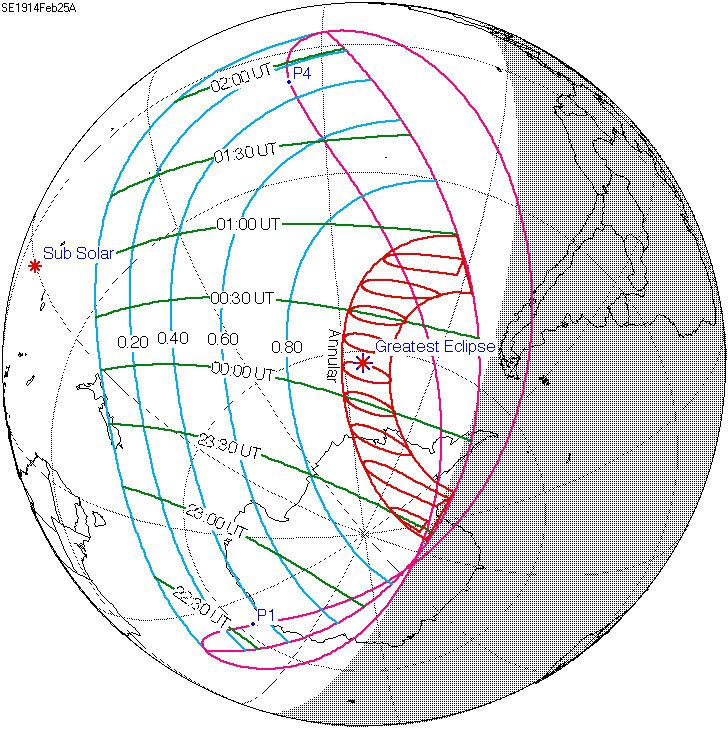Nature Annular Magnitude 0.9248 Max. width of band 839 km (521 mi) Start date February 25, 1914 | Gamma -0.9416 Duration 335 sec (5 m 35 s) Greatest eclipse 0:13:01 | |
 | ||
An annular solar eclipse occurred on February 25, 1914. A solar eclipse occurs when the Moon passes between Earth and the Sun, thereby totally or partly obscuring the image of the Sun for a viewer on Earth. An annular solar eclipse occurs when the Moon's apparent diameter is smaller than the Sun's, blocking most of the Sun's light and causing the Sun to look like an annulus (ring). An annular eclipse appears as a partial eclipse over a region of the Earth thousands of kilometres wide.
Solar eclipses of 1913-1917
Each member in a semester series of solar eclipses repeats approximately every 177 days and 4 hours (a semester) at alternating nodes of the Moon's orbit.
References
Solar eclipse of February 25, 1914 Wikipedia(Text) CC BY-SA
